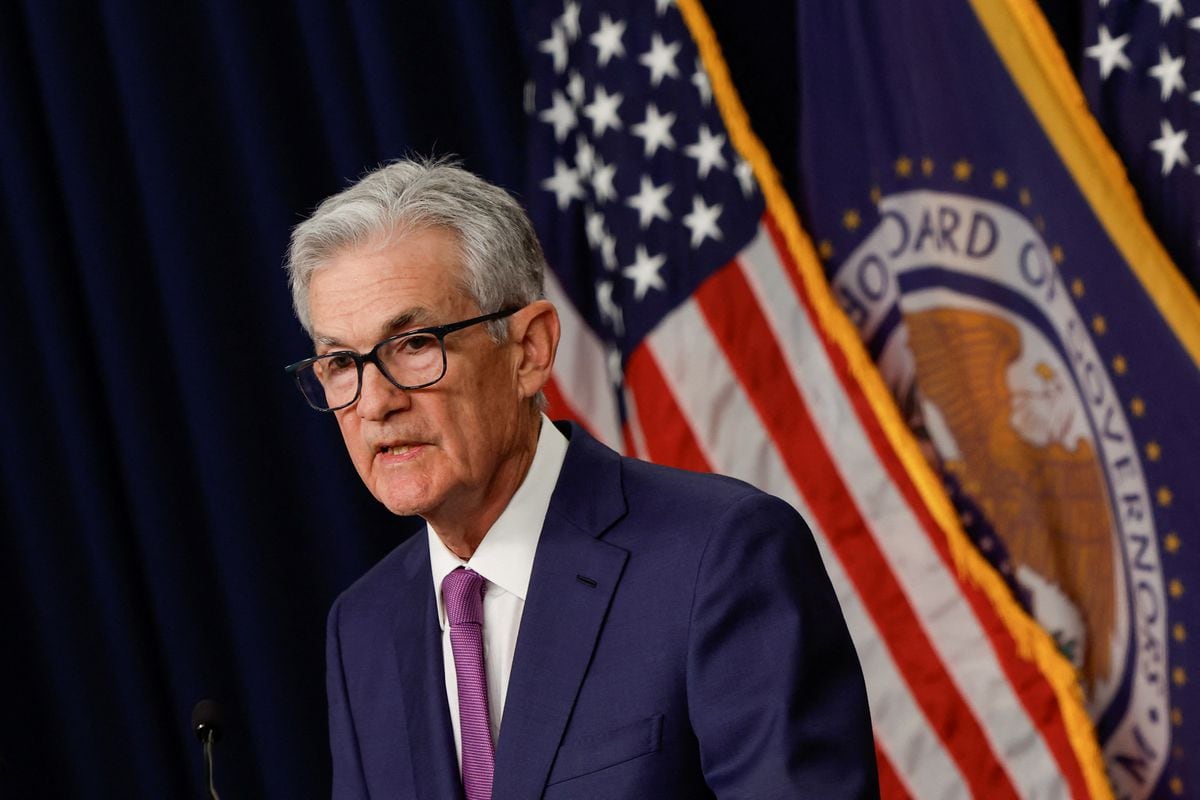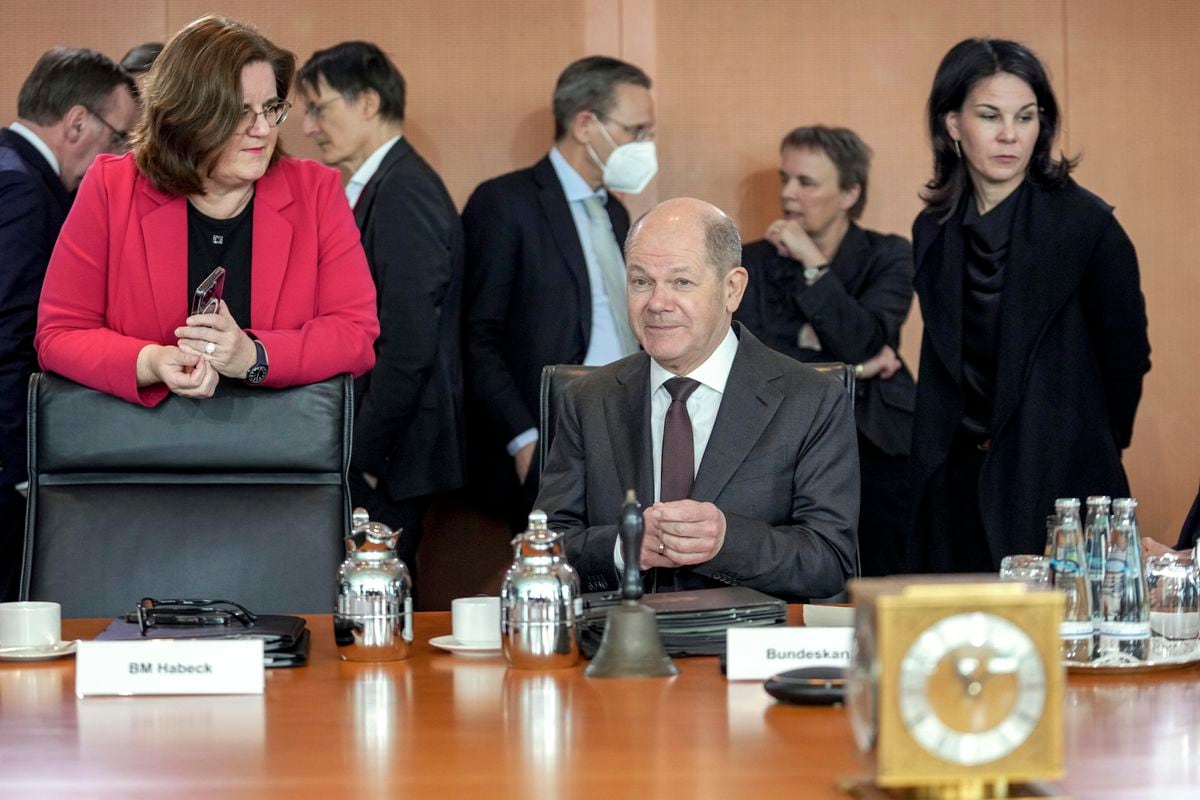Africa is immersed in a severe debt crisis, exacerbated by the covid-19 pandemic and the war in Ukraine: the debt of sub-Saharan governments represents 53.73% of its GDP, according to the International Monetary Fund, and nothing less that 22 countries are at risk of default, a pit into which Zambia and Ghana have already fallen.
China has been one of the leading lenders to Africans for years and investments from the Asian giant are attractive to many States, which have less access to international debt markets, because they are not usually accompanied by counterparts in terms of human rights or respect environmental.
At the same time, Beijing needs to expand in search of markets and resources and Africa offers all of this.
It's fierce competition, but despite the political and media noise,
China is neither the only nor the most important creditor of the continent.
The experts further explain that Beijing's financial practices do not lead to very different results from those of other countries and private investment funds.
Although it is difficult to know exactly due to the very opacity of the system, Chinese loans represent around 12% of African external debt, both public and private, which amounts to around 660,000 million euros and has multiplied by five in the two decades, according to a study by the NGO Debt Justice based on data from the World Bank.
Said debt is divided into three groups and each one represents approximately one third of the total: multilateral, contracted with the large international financial organizations such as the World Bank or the International Monetary Fund;
the debt that is in the hands of private investment funds;
and, finally, the bilateral one, that is, granted by governments or public entities.
The Asian country is the most important creditor in terms of bilateral debt, a phenomenon that exploded a quarter of a century ago due to the coincidence of two factors: on the one hand, the foreign debt crisis led Western countries to be more reluctant to finance Africa and, on the other hand, China was there at the right time.
“It was a growing power and it began lending to developing countries at a time when the West began to be more cautious with its borrowing policies,” recalls Babacar Sene, professor of economics at Dakar's Cheikh Anta Diop University and debt expert.
drop in Chinese loans
However, the trend may be reversing, a drift that began even before the pandemic.
According to the recent report
The response to the African debt overhang and the role of China
by the Chatham House think tank, the volume of new Chinese loans to African governments fell from a peak of 26.8 billion euros in 2016 to 7.74 billion in 2019, plummeting back to 1,793 million in 2020, although this last figure does reflect the exceptional circumstances of the pandemic.
In the opinion of the authors of the aforementioned study, "China did not cause the African over-indebtedness in most cases, but it is key to finding a solution."
For her part, the US Treasury Secretary, Janet Yellen, recently urged China to "move faster" to support specific debt restructuring for developing countries, especially Zambia, which
defaulted
in full pandemic.
“China really needs to come to the table.
China's unwillingness to fully participate and move in a timely manner has really been an obstacle," he said at an event held at the Center for Strategic and International Studies in Washington, where he explained that Beijing has delayed such restructuring because it requires China the multilateral organisms that also participate in the reduction of the debts of the countries in difficulties.
The enormous flow of Chinese capital to Africa in the last two decades has served, to a large extent, for the construction of large infrastructures.
A somewhat hackneyed but useful example are highways, without which it is unthinkable to think of developing areas furthest away from large urban population centers.
The ports are also valid as a sample.
In 2020, a report by the US Secretary of State entitled
The Elements of China's Challenge
once again insisted on "predatory development policy" and "debt-trap diplomacy" in reference to Asian practices in the developing world.
One of the most common criticisms is that China includes, as an aggressive guarantee, retaining ownership of the infrastructure in the event of suspension of payments.
“It is true, it tries to protect your investment, but other countries also include guarantees that, by other means, lead to the same result.
In Latin America, many countries sold part of their public companies in order to pay.
And he did not go to China”, concludes Professor Sene.
In addition to reducing its debt, China has been for years forgiving part of the existing one.
Between 2000 and 2019, China has waived some 3.2 billion euros and has renegotiated another 14.15 billion of debt in Africa, according to Déborah Bräutigam, professor of political economy at Johns Hopkins University and director of the China Africa Research Initiative (CARI). ).
Last January, Chinese Foreign Minister Qin Gang recalled that his country actively participated in the G20 initiatives to alleviate debt and that it negotiated bilaterally with 19 countries in the same direction.
"The debt-trap is, in reality, a narrative-trap imposed by the West," defended the ruler.
Infrastructures in exchange for resources
In the last five years, the debt contracted with China by African countries has also evolved, going from loans for the construction of infrastructures in exchange for resources and raw materials to a model supported by more calculated commercial decisions.
Everything is worth, to a greater caution.
In Kenya, the Export-Import Bank of China (Eximbank) is the main financier of the country's flagship project, the railway line that will connect the port of Mombasa with the capital, Nairobi, and Lake Naivasha.
The macroproject implies enormous risks and the loans were signed with great opacity, which generated much criticism.
Recently, the Asian giant once again financed a project in Kenya,
a motorway with a cost of less than 565 million euros whose property will be Chinese for 30 years and then it will pass into Kenyan hands, a safer model, on an affordable scale and widely used in the rest of the world.
Between one loan and another there is a very profound change.
Another example is Côte d'Ivoire, where Chinese loans have not generated debt stress because they have been provided.
Angola is the African country that accumulates the most debt with China and an example that illustrates the behavior of the Asian giant on the continent.
After the war ended in 2002, the African country had an urgent need for funds for its reconstruction and, at the same time, it had a fundamental resource to pay for it: oil.
Chinese investment in infrastructure in exchange for Angolan crude.
More than 39,644 million dollars in two decades.
At present, Angola has taken advantage of various multilateral initiatives to alleviate the payment of its debt with Western creditors and it is believed that it has negotiated a moratorium with China, the details of which have not been disclosed.
However, high oil prices are rowing in the direction of Angola.
Zambia represents the other extreme.
On November 18, 2020, Central Bank Governor Christopher Mvunga publicly announced what no one wanted to hear: “We have made a deliberate decision not to pay any more to any of our creditors.”
Zambia became the first African country to announce suspension of payments on its impressive external debt, which was around 133% of its GDP, according to the International Monetary Fund.
Is China responsible?
Yes and no.
About a third of the foreign debt is held by the Chinese, but in recent years Zambia has received a huge financial injection from international financial organizations and the Eurobond market.
China, France and other creditors, in coordination with the Debt Service Suspension Initiative (DSSI),
Last December, and after enormous turmoil, one of the most solid economies in West Africa to date, Ghana's, fell into suspension of debt payments.
With inflation of up to 40% and the devaluation of 50% of the value of its currency, the payment of the principal received and its interest was eating up to 70% of its annual income.
But, in whose hands is the Ghanaian debt?
42% is domestic debt and the rest is held mainly by private global asset managers such as BlackRock, Vontobel, Alliance Bernstein, Neuberger Berman and PIMCO.
Most American.
Of the 26.8 billion euros of Ghanaian external debt, 1.6 billion belong to Chinese holders.
You can follow PLANETA FUTURO on
,
and
, and subscribe
here
to our 'newsletter'
.

/cloudfront-eu-central-1.images.arcpublishing.com/prisa/5XLSMS5E5VDH7G5UXRCLTF3Y4E.jpg)













